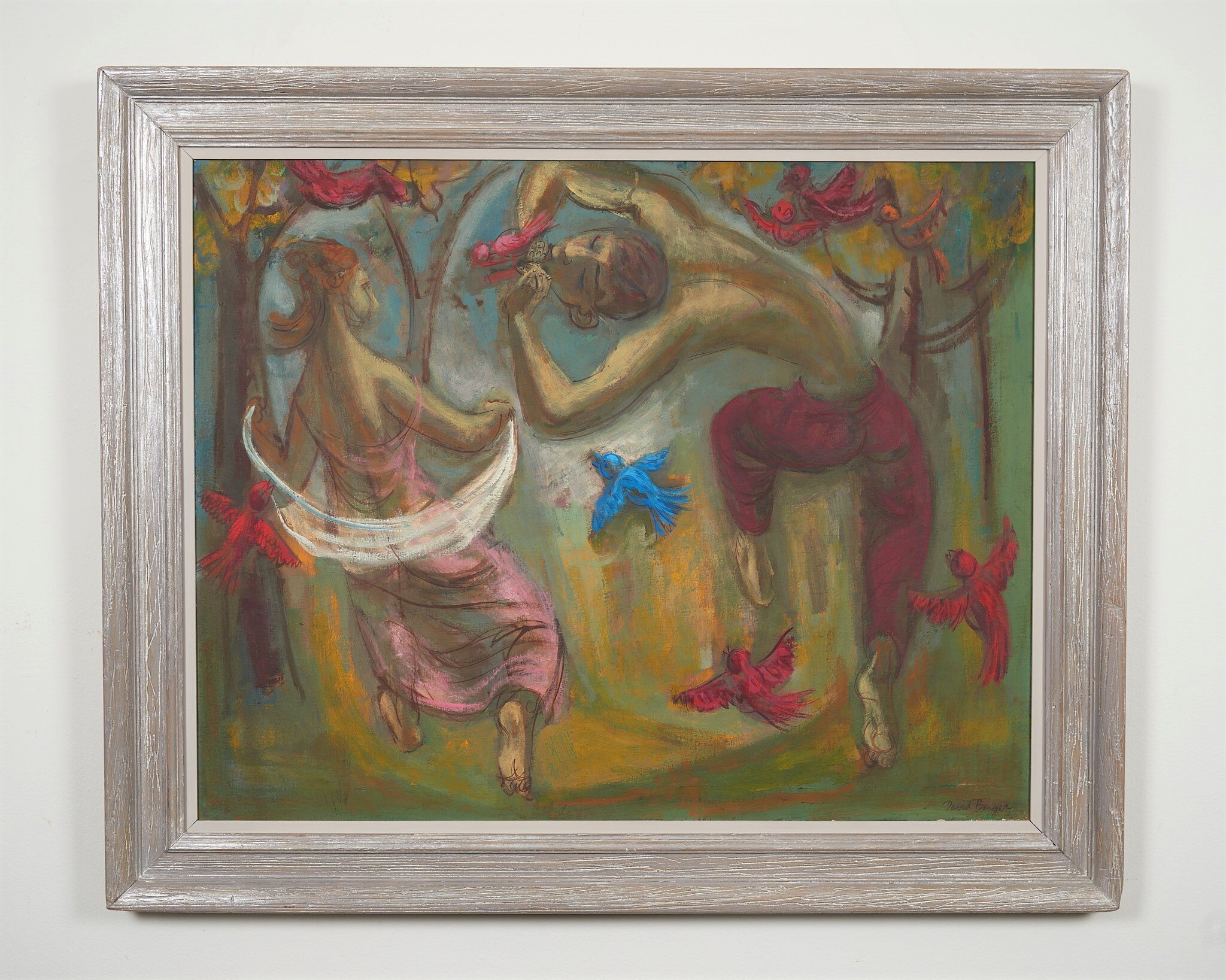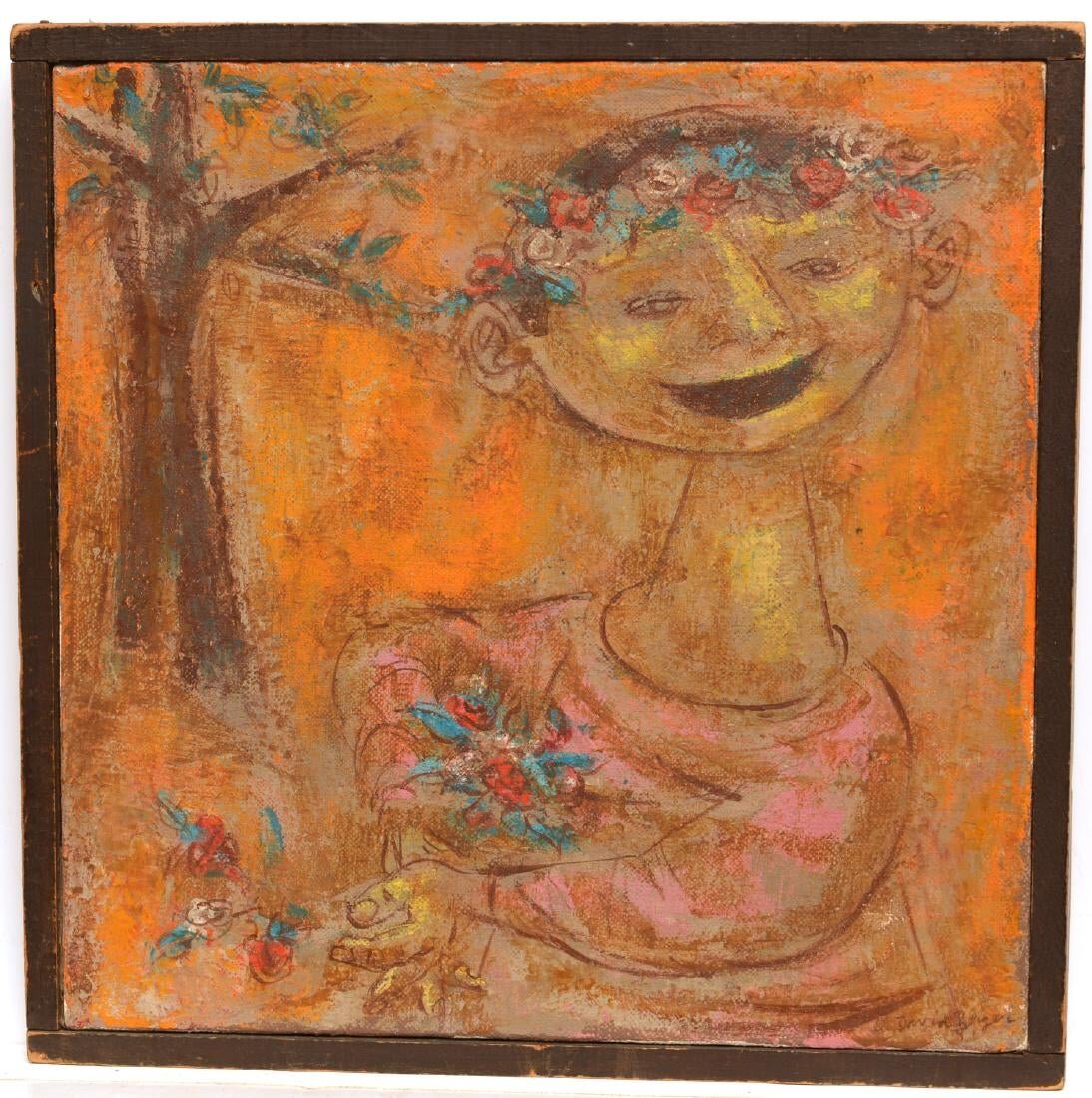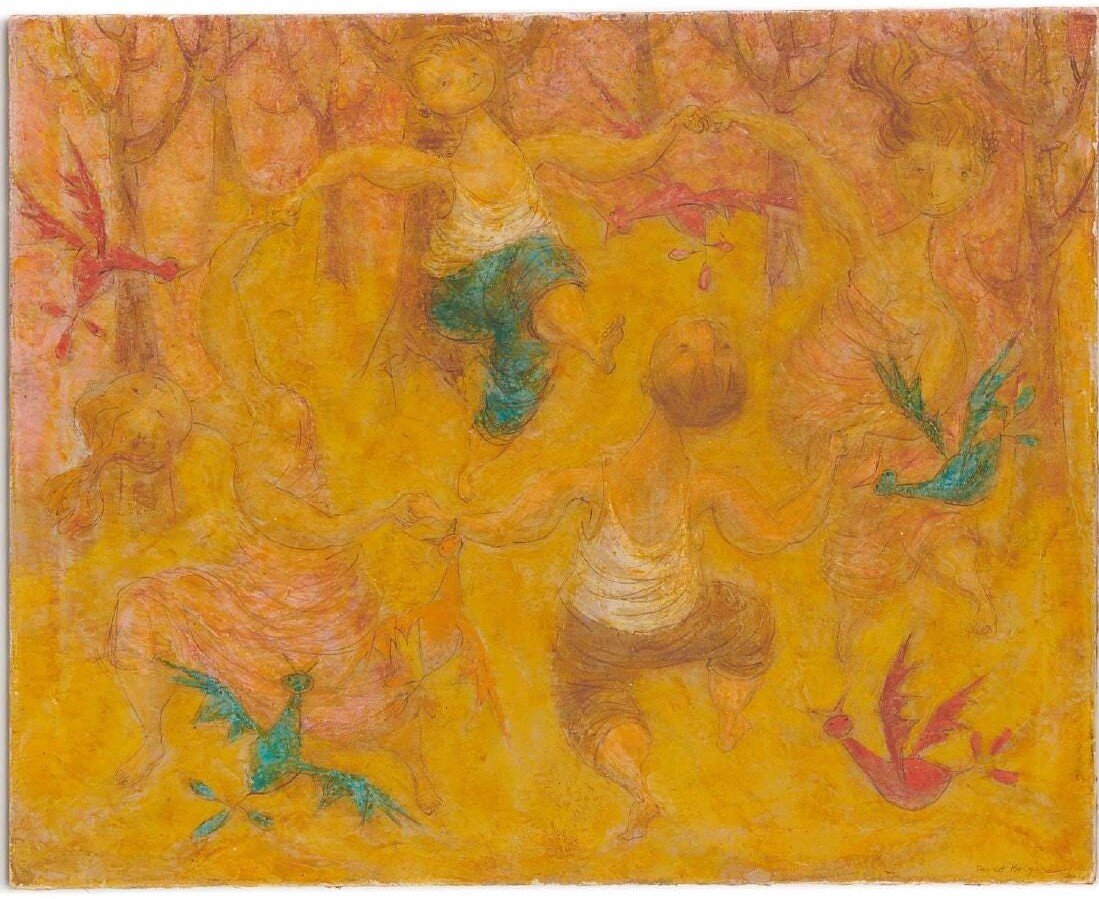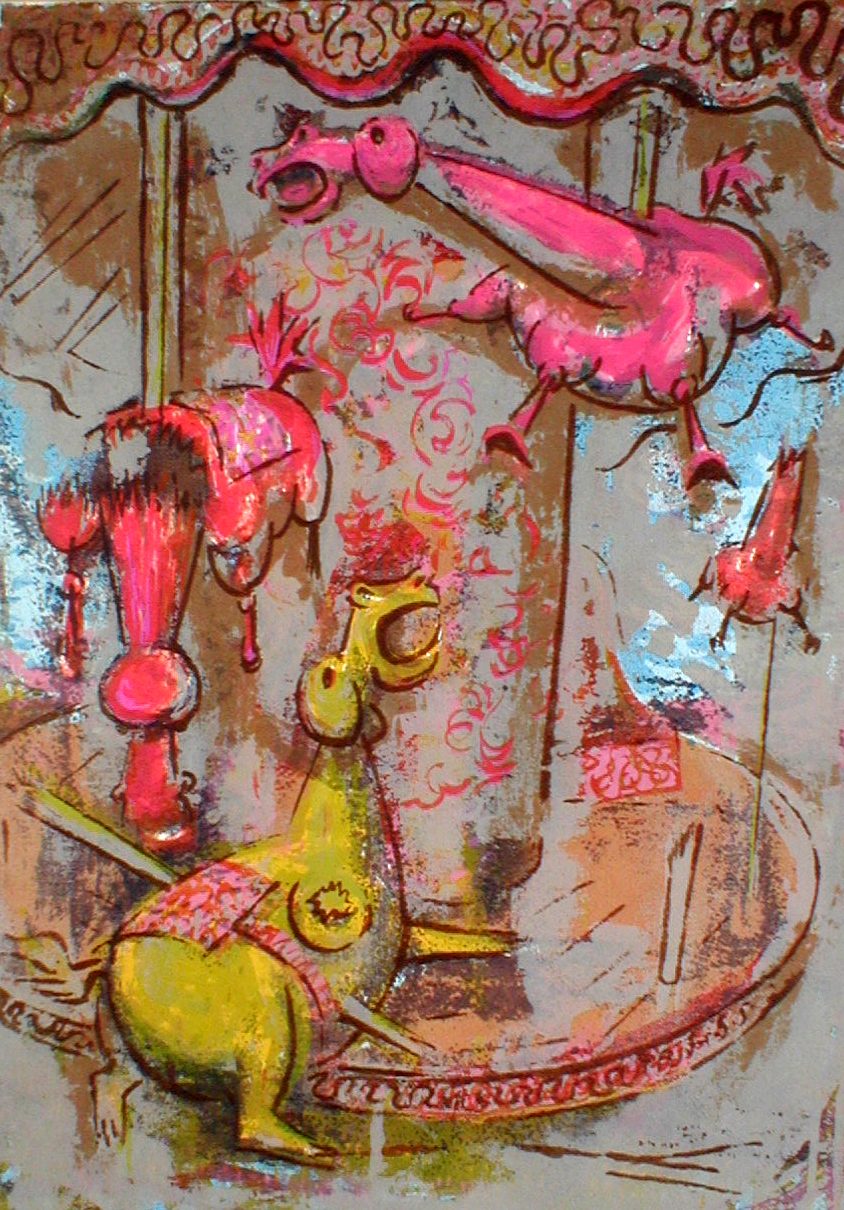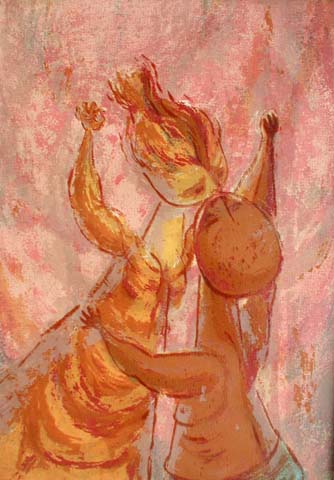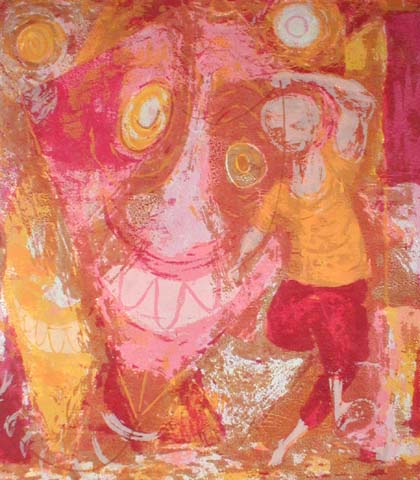When David Berger died in 1966, at 46 years old, he left behind a beloved wife, two little daughters and a wondrous legacy of paintings, sculptures and works on paper. Although he couldn’t have intended it, the image we envision of these circumstances, the mix of family love, grief, fear, fracture, as well as joy, ritual and celebration, is depicted in his art.
If expressionism renders emotions through color and gesture of paint, then David Berger’s figurative expressionism is a marvelous achievement in representing emotional poles: the joy of love, the terror of life, the delight of celebration and the chaos of nature’s creation and destruction.
David Berger studied painting at the Massachusetts College of Art and received his MFA degree from the esteemed Cranbrook Academy in Michigan in 1950. His art was the subject of one-man museum exhibitions at the De Cordova Museum in Lincoln, Massachusetts, in 1954 (prints), 1955 (paintings) and 1967 (memorial retrospective), at the Cranbrook Academy in 1957 and at the Kalamazoo Art Institute in 1957. Berger had numerous gallery exhibitions and was represented in New York by the Cober Gallery. In 1956 Berger was included in Art in America magazine’s “100 Outstanding New Talents in the USA.”
A number of recent museum exhibitions have brought renewed attention to the group of figurative expressionist artists active in Boston in the 1950’s, with which David Berger was affiliated. These artists included Karl Zerbe, Hyman Bloom, Jack Levine, Mitchell Siporin, Lawrence Kupferman and Philip Guston, amongst others. “Against The Grain: The Second Generation of Boston Expressionism” was presented at the Art Gallery of the University of New Hampshire in 2000 followed by “Painting in Boston: 1950-2000” a major exhibition at the De Cordova Museum of Art in 2002. In the same year “Color and Ecstasy: the Art of Hyman Bloom” was enthusiastically received by New York art critics at the National Academy of Design. The exhibition at Alan Rosenberg Works of Art included paintings as ell as Berger's expressionistic silkscreen prints displayed along with furniture and decorative arts from the 1950's, as the art would have been seen when it was created.


